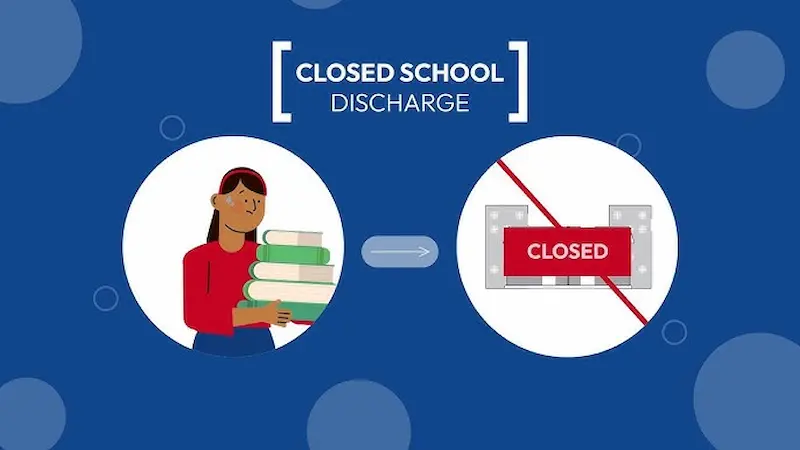If you’re wondering how student loan forgiveness programs work, you’re not alone. Student debt is one of the biggest financial burdens for millions of Americans, and figuring out how to manage or reduce it can feel overwhelming. Thankfully, student loan forgiveness programs exist to help borrowers pay off their debt faster—or in some cases, eliminate it entirely.
In this guide, we’ll break down exactly how these programs work, who qualifies, and how you can take advantage of them to ease your financial stress. By the end, you’ll have a clear roadmap for reducing your student loans and achieving financial freedom.
What Are Student Loan Forgiveness Programs?

Student loan forgiveness programs are initiatives, mostly offered by the federal government, that allow borrowers to cancel some or all of their student loan debt. Essentially, if you meet certain requirements, you may not have to pay back the full amount you borrowed.
These programs are designed to:
- Reward careers in public service or teaching
- Support borrowers with low incomes
- Provide relief for borrowers affected by school closures or fraud
- Assist borrowers with permanent disabilities
Understanding how student loan forgiveness programs work is crucial. Each program has its own rules, eligibility criteria, and application process. Knowing the details will help you take advantage of the opportunities available to you.
Types of Student Loan Forgiveness Programs
There are several types of forgiveness programs, each serving a different group of borrowers. Let’s break them down:
1. Public Service Loan Forgiveness (PSLF)
Who it’s for: Employees who work full-time in government or qualifying non-profit organizations.
How it works:
- Make 120 qualifying monthly payments under a federal repayment plan.
- Work full-time for a government agency or non-profit.
- After completing these requirements, any remaining federal Direct Loan balance is forgiven, tax-free.
Example: If you work as a social worker in a non-profit and make $300 per month toward your loan under an income-driven repayment plan, after 10 years of qualifying payments, the remaining balance could be completely forgiven.
2. Teacher Loan Forgiveness
Who it’s for: Teachers working in low-income schools or educational service agencies.
How it works:
- Teach full-time for five consecutive years at a qualifying school.
- Depending on your subject, you could receive $5,000–$17,500 in loan forgiveness.
Example: A math teacher in a low-income high school may qualify for $17,500 in forgiveness, making it easier to pay off loans faster.
3. Income-Driven Repayment (IDR) Forgiveness
Who it’s for: Borrowers whose income is low relative to their loan balance.
How it works:
- Monthly payments are calculated based on your income and family size.
- Eligible repayment plans include PAYE, REPAYE, and IBR.
- After 20–25 years of qualifying payments, any remaining loan balance may be forgiven.
Example: A nurse paying $150 per month under an income-driven plan for 22 years may have thousands of dollars forgiven at the end of that period.
4. Closed School Discharge

Who it’s for: Borrowers whose school closes while they’re enrolled or soon after withdrawal.
How it works:
- You may be eligible to have your federal loans forgiven entirely.
- This prevents borrowers from paying for education that they couldn’t complete due to circumstances beyond their control.
5. Total and Permanent Disability Discharge
Who it’s for: Borrowers with total and permanent disabilities.
How it works:
- Borrowers must provide documentation from the Social Security Administration or a physician.
- Once approved, federal student loans are completely discharged.
Tip: This discharge is usually retroactive, meaning you may receive a refund for payments already made.
You may also like to read this:
Best Financial Habits For College Students To Manage Money
How To Build A Student Budget Plan For College Success Today
Simple Financial Planning For Beginners: Easy Money Tips
Federal Student Loan Programs Explained Smart Borrowing Tips
Best Private Student Loan Options For College Students
6. Borrower Defense to Repayment
Who it’s for: Borrowers whose school misled them or engaged in fraud.
How it works:
- You can apply for loan forgiveness if you were defrauded or misled by your school.
- Federal loans may be partially or fully forgiven depending on the circumstances.
Example: If a college promised a program would lead to a professional license but it didn’t, you may qualify for forgiveness under this program.
How to Apply for Student Loan Forgiveness Programs
Understanding how student loan forgiveness programs work also means knowing how to apply. Here’s a step-by-step guide:
- Check Eligibility – Each program has specific requirements based on your employment, school, or income.
- Gather Documentation – Collect pay stubs, tax returns, proof of employment, or medical records as required.
- Submit Your Application – Most federal forgiveness programs can be applied for through studentaid.gov.
- Stay Compliant – Continue making qualifying payments and meet deadlines to maintain eligibility.
Tips to Maximize Your Loan Forgiveness
- Keep detailed records of all payments, employers, and schools attended.
- Ensure your loans are federal, as most forgiveness programs do not apply to private loans.
- Double-check your repayment plan to ensure it qualifies for forgiveness.
- Regularly contact your loan servicer to stay updated on your eligibility and program requirements.
- Be patient and persistent – Some programs, like PSLF, require a decade of payments.
Final Thoughts
Knowing how student loan forgiveness programs work can dramatically improve your financial situation. Whether you’re a teacher, a public servant, or someone with a low income, these programs offer real opportunities to reduce or eliminate student debt. By understanding the programs, following the rules, and staying organized, you can take control of your finances and move closer to financial freedom.
Student loan forgiveness is not just a possibility—it’s a realistic path for borrowers who plan carefully and take the right steps.
FAQs on How Student Loan Forgiveness Programs Work
1. What are student loan forgiveness programs?
Answer: Student loan forgiveness programs are initiatives, mostly federal, that allow borrowers to cancel some or all of their student loan debt if they meet specific eligibility criteria, such as working in public service, teaching, or having a low income.
2. How do student loan forgiveness programs work?
Answer: These programs work by setting specific requirements like qualifying payments, employment, or income levels. Once you meet the criteria, your remaining loan balance may be partially or fully forgiven, meaning you won’t have to repay it.
3. Who qualifies for student loan forgiveness programs?
Answer: Qualification depends on the program. Examples include: public service employees, teachers in low-income schools, borrowers on income-driven repayment plans, students affected by school closures, or borrowers with permanent disabilities.
4. Can private student loans be forgiven?
Answer: Most student loan forgiveness programs only apply to federal loans. Private student loans generally do not qualify for forgiveness programs, though some private lenders may offer hardship options.
5. Is forgiven student loan debt taxable?
Answer: It depends on the program. For example, Public Service Loan Forgiveness (PSLF) is tax-free, but some income-driven repayment forgiveness may be considered taxable income under current IRS rules.




